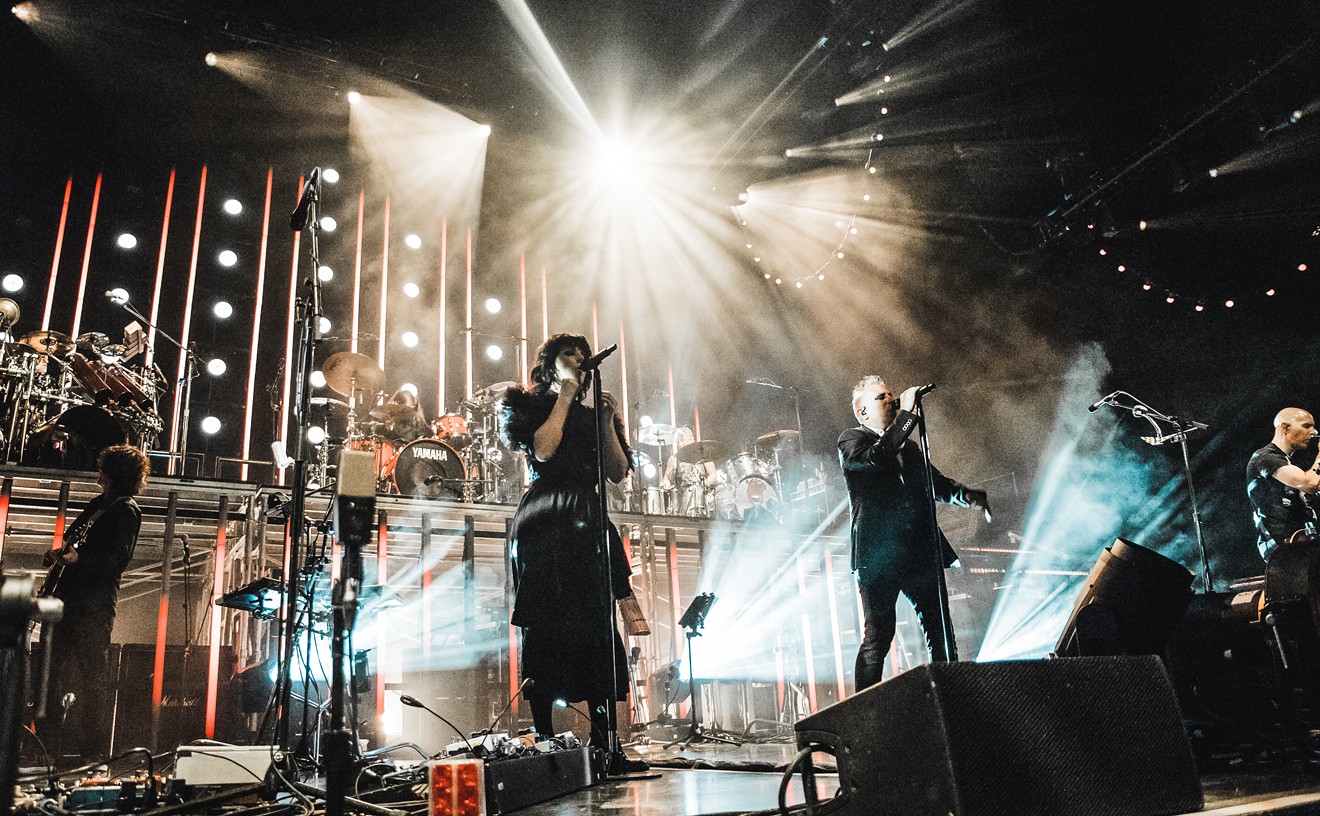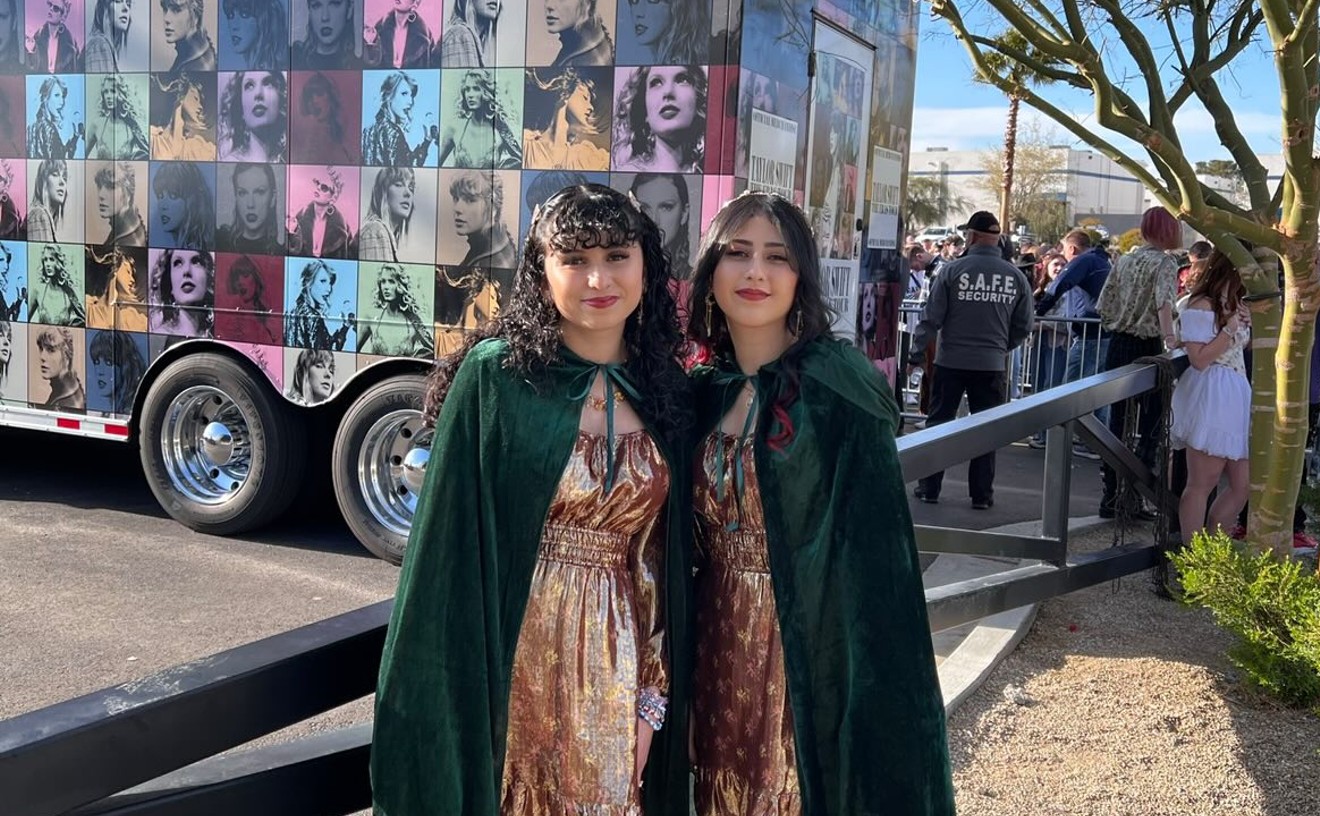Something similar happened to awareness of the Chicano influence on rock and roll; today, it is all but ignored, conventional wisdom being that it jumps from Ritchie Valens to Los Lobos, with nothing in between. But in their day, those three records (and others) gave voice to the burgeoning Mexican-America population in Southern California and resonated well outside their barrios. The recent release of four volumes of compilations called The West Coast East Side Sound (Varese Vintage) thus fills a crucial void, though it will take several volumes of San Antonio rock and rhythm and blues from the same era to complete the task. The Alamo City's Sunny and the Sunglows, after all, had three Hot 100 hits -- including "Talk to Me," No. 11 in 1963 -- and the group racked up a fourth after Sunny Ozuna had left. The well-integrated S.A. scene also produced the likes of Danny Ezba (in whose group Augie Meyer and Monkee Michael Nesmith launched their careers), Sonny Ace y los Twisters (who did a great Spanish-language version of "Woolly Bully"), Charlie and the Jives, and many more, while also spawning Doug Sahm's Sir Douglas Quintet.
The East Side contribution to rock is overlooked partly because it wasn't a distinct sound. Sometimes it wasn't even instantly identifiable as Chicano -- but that was the whole idea. The diversity here is nearly as impressive as the fact that, somehow, these records are of a piece. The guitar sound drew from the same sources (especially the Cuban ballad "Malaguena") as surf. The screaming saxes fly right out of jump blues. Rooted in doo-wop and Motown, many East Side acts were vocal groups backed by anonymous bands. Whether embracing tenderness, machismo, innocence, loneliness, romance, or unabashed teenage fun, the lead voices all but dripped with intimacy and sincerity at their best (though at their worst they crossed into treacly melodrama). The vocal harmonies of the Salas Brothers ("One Like Mine," "Leaving You," and others) derived from the popular Mexican trio Los Dandys, but others reveal no accent at all. Many of these songs (the Romancers' "Take My Heart," with Andy Tesso's jumpy guitar) utilize Latino or Latino-influenced rhythms, but most stick to the era's rock and R&B beats. The cool soul-jazz of organist Jimmy Smith and pianist Ramsey Lewis were influences. The New Orleans sound figured prominently, while groups like the Romancers successfully made the transition from surf and hot rod to British Invasion, garage, and folk-rock.
The songs were often derivative, their sources dizzyingly eclectic, and sometimes suspect to rock aesthetes; Willie G's "Brown Baby" comes from Hugh Masakela's "Grazing in the Grass," and the Atlantics' "Sloop Dance" shamelessly rips off the McCoys' "Hang on Sloopy." The East Side presence can be subtle, almost subliminal; as Ruben Guevera wrote of Li'l Julian Herrera's 1956 doo-wop ballad "Lonely, Lonely Nights," the precursor to these sides, "Something about it -- the accent, the voice, the attitude -- made it different. It was Chicano rock."
East Side groups have had notable influence on mainstream rock, from War's black-'n'-brown funk to Tower of Power's horn-based sound. Santana's version of Willie Bobo's "Evil Ways," which was relegated to the can soon after it was recorded, would probably have languished there had the Village Callers' take (with much stronger vocals) not become a regional hit in San Francisco. Finally, the East Side ethos, that combination of Mexican-flavored tunes alternating with straight-ahead rock, informs much of what Los Lobos does today.
That particular aesthetic dominated Eddie Davis' labels -- Rampart, Faro, Gordo, Linda, Valhalla, Prospect, and Boomerang. Davis' career represents classic, seat-of-the-pants music-bizzing. The former child actor was a restaurateur and nightclub owner when he bankrolled his own four-song demo, including "I Was a Teenage Brain Surgeon for the FBI." Quickly coming to terms with his limitations, he started his own label to record actor Kenny Miller, star of 1958's I Was a Teenage Werewolf. But he didn't focus on Chicano-oriented sounds until 1962, when he began working with the Mixtures and the Romancers.
The Mixtures -- whose members were Asian, white, Puerto Rican, Mexican, and black -- were the house band for the Friday Night Dance Davis co-sponsored with radio station KRLA at Rainbow Gardens in nearby Pomona. Davis also attracted bands to his labels via his TV show, Parade of Hits. When manager-producer Billy Cardenas tried to book his band the Romancers there, Davis found himself a new partner. Cardenas became his A&R man and co-owner of a club in Fullerton called the Rhythm Room. With a dazzling lead guitarist in Andy Tesso and a charismatic focal point in singer-rhythm guitarist Max Uballez, the Romancers had already scored a local hit with "Slauson Shuffle" for Bob Keane's Del-Fi Records (Ritchie Valens' label, which recorded most Chicano rockers who weren't signed to Davis). Uballez wrote, arranged, and produced for his own band and others under the Davis umbrella.
With the L.A. County Latino population more than doubling between 1950 and 1960, and Chicano teens asserting their spending power through custom car clubs and snazzy threads, Davis aspired to create a Chicano Motown -- but he never limited himself to brown acts exclusively. Larry Tamblyn, both solo and with the early Standells, recorded for Davis; Tamblyn also produced the Premiers' 1966 fuzzfest "Come On and Dream" b/w "Get on This Plane." And Davis maintained two versions each, one black and one brown, of the Majestics and Atlantics.
Cardenas also brought Davis the Premiers, with their infectious, trash-rock remake of Don and Dewey's "Farmer John." Davis loved the swinging groove, courtesy of the Romancers, but felt the vocals needed camouflaging. So the Chevelles, a girls' car club that idolized the Premiers, came to the studio to party with the band. As they whooped it up, Davis played back "Farmer John" and recorded the festivities over them. He then plastered "Recorded Live at the Rhythm Room" across the label and made a hit out of the single and the club both. He turned the same trick with "La La La La La," the debut by Cardenas' other top group the Blendells, though the catchy muted trumpet no doubt also helped sell it.
Davis spread those two singles by leasing them to major labels, but kept Cannibal and the Headhunters' "Land of 1000 Dances" for Rampart. Smooth, suave, and badass, a product of two East L.A. housing projects, the quartet boasted impeccable street credentials. Frankie Garcia became known as "Little Cannibal" after biting a foe during a fight (his older brother was already known as "Big Cannibal"). Once he joined the vocal trio Bobby and the Classics, they took the new name. Their second single was this set's cover of Chris Kenner's minor 1963 hit, which Cannibal had been singing with the "na-na-na-naah" hook ever since he'd forgotten the words once in concert and had to improvise. With the Blendells backing the singers, the record was all thrust, with a rock-solid beat, nice horns, busy guitar, and aggressive vocals. The group opened for the Beatles' second tour, backed by King Curtis' band (which played on subsequent Cannibal singles). They joined Wilson Pickett, among others, on Murray the K's 1965 Christmas Show at the Brooklyn Fox. The next year, Pickett took "Land of 1000 Dances" into the Top 10 by speeding up Cannibal's arrangement. But like the Blendells and Premiers, Cannibal couldn't find a national follow-up, and retreated to East L.A. When he quit in 1967, he went to college, eventually becoming a nurse conducting AIDS research at the USC Medical Center until he succumbed to the disease himself in 1996 at age 49.
Davis and Cardenas fell out when the national hits started coming. As Chicano activism grew in the '60s, East Side artists such as Willie G responded with records like "Brown Baby." But the Vietnam War, that great annihilator of working-class youth, claimed so many musicians. When they came back -- if they came back -- rock and roll had gone freaky, and Chicano pop was fragmenting. The last hurrah was El Chicano's 1970 "Viva Tirado (Part 1)." The burbling, auspicious instrumental was actually a demo by the Chicano house band of a Japanese restaurant. In climbing to No. 28 nationally, it set off a comedy of errors between Davis, the band, and the major-label subsidiary that licensed it. Eddie became unhinged, destroying everything he had concerning the music biz: contracts, press materials, clips, and -- gasp -- even the masters of all those great records. His mother, who managed his businesses, died around the same time. Davis didn't release another record until 1977. He died in 1994. These four CDs are drawn from old 45s rather than master tapes, but nothing can blunt their strutting cries for respect, understanding, and a place in the warm California sun.










